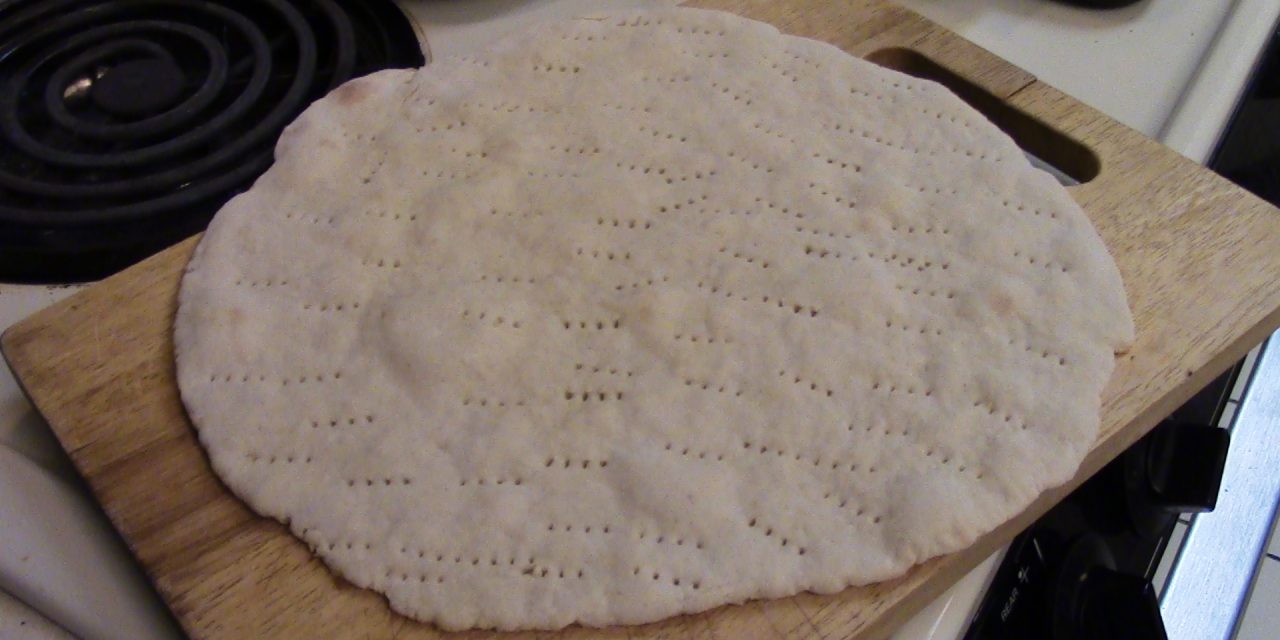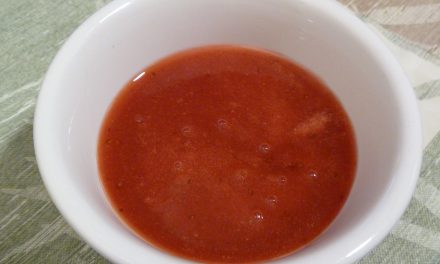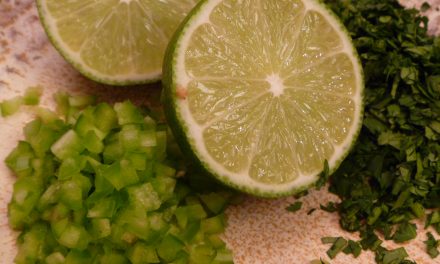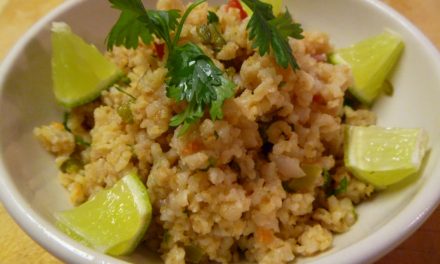As a chef, I usually am on the hunt for culinary perfection. While working in professional kitchens this meant perfecting the executive chef’s vision. Since I made the transition out of professional kitchens and into my own business, I drive myself even harder to find that flavor, that process, that technique that works. Each one of my recipes goes through a rigorous process: test, re-test, taste, have the spouse eat it more than once. Make sure the amounts, times, temperatures, and ingredients work. Strive for flavor perfection.
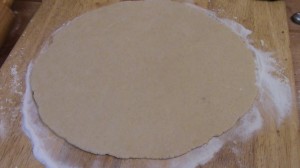 My biggest challenge has been to bake with gluten free flours. Lately I’ve been focused on gluten free pizza dough. I’m tired of paying the prices in supermarkets for the dough, or for the frozen pizza. I’m grateful that we have these choices, but I am a chef. I figure if I can perfect this, I can move on to other breads. A good pizza dough is a springboard for other breads, rolls, French bread, you name it.
My biggest challenge has been to bake with gluten free flours. Lately I’ve been focused on gluten free pizza dough. I’m tired of paying the prices in supermarkets for the dough, or for the frozen pizza. I’m grateful that we have these choices, but I am a chef. I figure if I can perfect this, I can move on to other breads. A good pizza dough is a springboard for other breads, rolls, French bread, you name it.
I first started making bread when I was five-years-old. I remember standing on the stool next to my grandmother learning what the dough feels like, how it stretches and relaxes, how you know when the dough is ready by the way it feels. Learning the gluten strands. Every time I smell yeast, these memories drift back, and I’m standing on my stool at the kitchen counter, looking at my coffee can bread grandma let me bake, my small hands still feeling the silkiness of the bread.
Gluten free bread is more science than feel. Though I’ve learned with the pizza dough when to know enough is enough. I’ve tested this recipe for the last three months and each time it comes out right. The dough is pliable and soft. It rises and bakes to crispy pizza crust perfection. It loves the cilantro pesto or any red pizza sauce you’d like to make. Herbs can be added into the dough if desired. Experiment with different spices too. But don’t get too crazy. It is, after all, pizza dough. If you want you can even give in to the breakfast pizza craze.
Don’t let your friends and family know that the dough is gluten free until after they eat the pizza. Then make the announcement and watch the look of surprise on their faces when the realization creeps into their consciousness. I do this when I take dishes to potlucks. That way I’m not spending all my time defending my “vegan” food. I’m spending time talking about how to make the food or where the food comes from. That’s more fun than an argument on why I don’t eat meat.
This is pizza dough we are talking about: simple, straight forward, no tricks involved pizza dough. So enjoy and have fun trying out different pizza sauces and toppings.
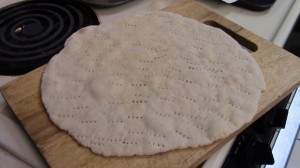

- 1 cup gluten free flour (I use Bob's Redmill)
- ½ cup rice flour
- ½ cup oat flour
- 1 ½ teaspoons salt
- 1 ½ teaspoons xanthan gum
- 1 package Fleischmann’s pizza yeast
- 1 tablespoon sugar (or sweetener of your choice)
- 1 cup warm water
- ¼ cup olive oil
- Pre-heat the oven to 425 degrees.
- Measure out all the dry ingredients. Mix together thoroughly. Add water in slowly, making sure all the flour incorporates. If needed, add some more flour. Add in the olive oil, a little at a time. You may not need the entire amount of water.
- This recipe makes 2 10 inch pizza crusts. Split the dough in half, wrap one in wax paper and store it in the freezer in a plastic bag.
- Knead the dough for a few minutes then let it rest for 5-7 minutes. This allows the flour to absorb the water. Knead a little more, then roll out on a board dusted with rice flour into the desired shape.
- Poke the crust with the tines of a fork. This will keep allow the dough to "breathe", and will develop fewer air pockets.
- The yeast is self-rising and needs no activation through proofing.
- Par-bake in a 425 degree oven on a pizza stone for 10-12 minutes, or just until puffy. Remove from oven.
- Add your favorite sauce and toppings, and bake in oven for an additional 10-12 minutes. Serve with fresh green salads.
- Because gluten free flour does not have gluten strands, it does not need to be kneaded like regular dough. For those of you who know the characteristics of bread making, the xanthan gum is what causes the softness of the dough. It replaces the kneading which stretches the gluten strands of regular flour and causes the dough to be soft and pliable.

